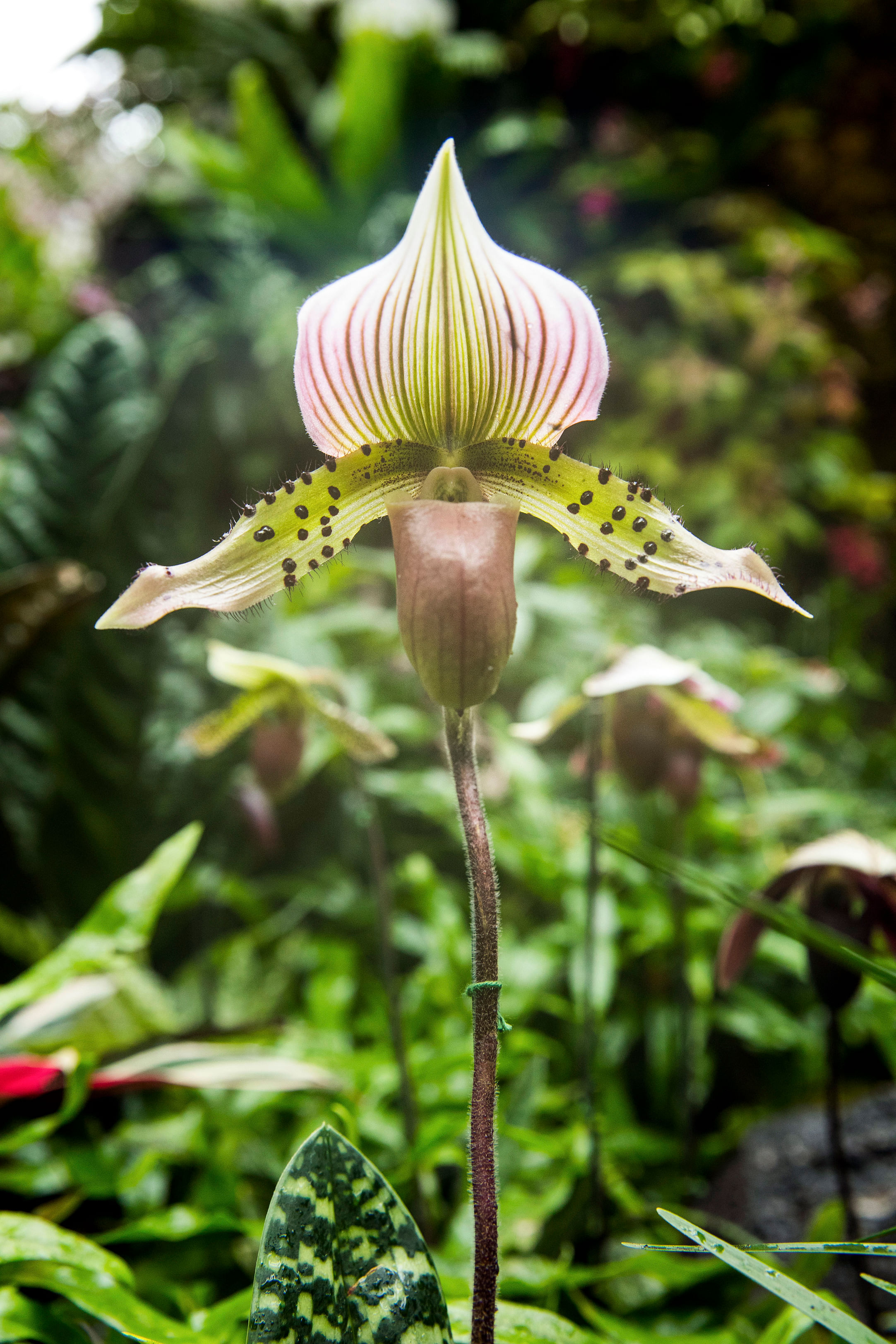More than a century later, orchidelirium continues unabated, although orchids are now transported by planes rather than ships.
Victorian times were an age of scientific discovery and exploration of the world and orchids were very much part of this.
Mr Hachadourian described how Charles Darwin saw an orchid with white flowers that are scented at night and have 30cm-long nectaries.
Darwin stated there must be a moth with a tongue long enough to pollinate Angraecum sesquipedale - in other words, a moth with a 30cm tongue. This was a shocking revelation from the scientist who had concluded that people were descended from apes.
And Darwin was right. Years after his death, the Xanthopan morganii moth and its 30cm tongue was found to be the pollinator of A. sesquipedale.
Mr Hachadourian also talked about orchid-collecting practices in Victorian times.
"Collectors lied about where orchids were found. They burnt the forest after collecting to prevent their competitors from having orchids that they had discovered.
"In modern days, this wouldn't be thought of as ethical. At the time, orchids were considered to be so abundant, it was of little consequence. Some orchids were even used as packing material for other orchids."
Today, the approach to orchids is different - conducting research and working to prevent illegal trade of wild-collected orchids.
This year's orchid show takes orchidelirium as its theme, but contextualises it for modern times by including references to the botanical garden's current research and conservation work.
The story of orchidelirium is narrated through a succession of displays.
There is a Wardian case - of the kind used to transport orchids on their long sea journeys from the tropics to Europe - crammed with orchids. Diminutive Epidendrum polinii poised under a magnifying glass contrasts Paphiopedilum sanderianum, which can have petals over 1m long, the longest petals of any plant in the world.
Juxtaposing such different species gives an indication of the diversity of the orchids.
Walking through the show unfolds the engaging story of orchidelirium from its beginning with P. papilio to current orchid conservation work.
Orchid enthusiasts can certainly be intrigued by the history of their hobby and delight in the excellent condition of the plants and range of species on display.
It is a reminder of the attention to detail Victorian gardeners paid to gardening techniques and showcasing plants.
At its simplest level for anyone taking a leisurely orchid-filled walk through the Orchidelirium show, it is a colourful and enchanting experience.
THE GUARDIAN
- The Orchidelirium show at the New York Botanic Garden runs till April 17.


